Exceptional Buddhist gilt-bronze figures lead Bonhams' Fine Chinese Art Sale in London
Highlights of the sale include twenty-one exceptional Himalayan and Chinese bronze sculptures from the Jeanette Claude Jongen collection of Buddhist art, with attractive estimates ranging from £3,000 – 18,000. Photo: Bonhams.
LONDON.- Bonhams will offer a range of carefully selected Chinese ceramics and works of art including jades, metalwork and rhinoceros horn carvings in the Fine Chinese Art sale, to be held on 12 November at Bonhams New Bond Street.
Highlights of the sale include twenty-one exceptional Himalayan and Chinese bronze sculptures from the Jeanette Claude Jongen collection of Buddhist art, with attractive estimates ranging from £3,000 – 18,000 (Lots 70-90). The pieces are most notable for their rarity and exceptional quality. The Jongen collection was primarily assembled in the 1960s and 70s; the majority of the pieces were exhibited in 1978 and subsequently published in A. Neven, Etudes D’Art Lamaique et de L’Himalaya, Brussels, 1978.
Of particular interest are a rare inscribed gilt-copper alloy figure of Arhat Bhadra, 17th century (Lot 80), and a large and rare gilt-copper-alloy figure of Shakyamuni Buddha, circa 16th century (Lot 73).
A large and rare gilt copper-alloy figure of Shakyamuni Buddha, Tibet, circa 16th century. Estimate £15,000 - 18,000 (€21,000 - 25,000). Photo: Bonhams.
The figure well cast, seated in vajraparyankasana on a beaded double-lotus base, the right hand held in bhumisparsha mudra, the left in dhyana mudra, wearing a voluminous robe finely incised with floral scrolls, draping elegantly over his shoulders and falling in loose folds over his crossed legs, the serene face with a meditative expression and downcast eyes, flanked by pendulous ears cut with vertical slots, the hair and ushnisha arranged in tight curls and supporting an ovoid jewel, the sealed base incised with a double vajra. 26cm (10 2/8in) high
Provenance: the Jeannette Claude Jongen collection of Buddhist Art
Published and Illustrated: A.Neven, Etudes D'Art Lamaique et de L'Himalaya, Brussels, 1978, pp.117-118, pl.22 (the catalogue is offered as part of the lot).
Notes: The sumptuous robes falling in compacted delicate folds across the arms and legs are similar to those of a circa 15th century Buddhist hierarch in the Nyingjei Lam Collection, see J.Casey and D.Weldon, The Sculptural Heritage of Tibet, London, 1999, p. 133, no.49. Both figures share the same attenuated form and are raised on similar lotus bases. The hemlines are incised with bold foliate designs, as is the unusual under-garment across his chest. Compare with a gilt bronze Maitreya of similar proportions and wearing a full cloak-like garment sold at Christie's New York, 17 September 1998, lot 133.
A rare inscribed gilt-copper alloy figure of arhat Bhadra, Tibet, 17th century. Estimate £7,000 - 9,000 (9,800 - 13,000). Photo: Bonhams.
The arhat seated in lalitasana on a lotus base incised with a lengthy inscription identifying the figure as Bzang po, wearing heavy inner and outer robes finely incised with floral scrolls and flower heads, the right hand in vitarka mudra, the left hand resting on the lap, the face with a meditative expression, the hair cropped short, the back incised with a Tibetan inscription, the base sealed and incised with a double vajra. 17cm (6 6/8in) high
Provenance: the Jeannette Claude Jongen collection of Buddhist Art
Published and Illustrated: A.Neven, Etudes D'Art Lamaique et de L'Himalaya, Brussels, 1978, p.114, pl.16 (the catalogue is offered as part of the lot).
Notes: The three line Tibetan inscription verso identifies the figure as Phyags.pa dgra bzang.po, a variant of the simple shortened form of Bzang.po, by which Bhadra is known.
The voluminous robes are incised with delicate foliate motifs that are realistically drawn to reflect the heavy folds over his entire body and almost totally obscure the lotus base. Another portrait that is most likely from the same series of arhats sold at Sotheby's New York, 4 June 1994, lot 25 and a further later set of thirteen, formerly in the Manheim Collection, sold at Christie's New York, 16 September 2008, lot 533.
The garment hook over his left shoulder and his curled-toe boots relate directly to Ming period thangkas depicting the Buddhist elders (luohans), illustrated in J.Singer and P.Denwood, Tibetan Art, 1997, p.111, no.92. For another arhat seated on a single row of lotus petals covered by robes, included in a private collection, see HAR - himalayanart.org/items/70301. Also compare with a portrait of Brog mi Lo tsa ba dated to the 15th century preserved in the Jokhang, see U. von Schroeder, Buddhist Sculptures Tibet and China, 2001, vol.2, no.276C, p.1073.
Along with the Jongen collection, other rare Buddhist works of art will also be offered, including a rare and large gilt-lacquered wood figure of Buddha, 17th/18th century, estimated at £90,000 – 120,000 (Lot 69).
A rare and large gilt-lacquered wood figure of Buddha, 17th-18th century. Estimate £90,000 - 120,000 (130,000 - 170,000). Photo: Bonhams.
Seated in dhyana, with his right hand raised and the left resting on his foot, both in karana mudra, wearing long flowing robes over his shoulders, tied at the chest, cascading into graceful pleats over his legs, the face set with a contemplative expression, flanked by pendulous ears, the hair arranged in tight curles surrounding the ushnisha. 92.5cm (36 3/8in) high
Notes: The striking wood figure of Buddha is expertly carved demonstrating superb craftsmanship, naturalistically rendering the soft folds of the robe cascading over the shoulders and gathering in ruyi shaped circles around the knees, the contemplative face gracefully conveying the benevolence of the deity.
The imposing size of the present lot suggests it would have been worshipped in a temple or shrine.
The technique of coating carved wood figures with gilt-lacquer appears to have emerged during the early part of the Ming dynasty, continuing on to the Qing dynasty and echoing Buddhist bronze figures in form and decoration.
Compare a related rare and large gilt-lacquered wood figure of Guanyin, 17th/18th century, sold in these rooms on 14 May 2015, lot 64
The sale will begin with a selection of early ceramics from the Feng Wen Tang collection (Lots 1-15), comprising a range of Jian ware bowls from the Song Dynasty, with estimates ranging from £2,000 – 6,000. The auction will then feature a collection of Longquan celadon-glazed wares for the scholar’s desk from the 15th and 16th centuries, with estimates ranging from £4,000 – 40,000 (Lots 22-34).
A rare documentary parcel-gilt pewter vase and cover, dated by inscription to the sixth year of Wanli period (AD 1578), estimated at £60,000 – 80,000 (Lot 59), is incised with panels enclosing scenes derived from the ‘Romance of the West Chamber’ reminiscent of illustrations in contemporary books.
A rare documentary parcel-gilt pewter 'Romance of the West Chamber' vase and cover, meiping. Dated by inscription to sixth year of Wanli (AD1578) and of the period. Estimate £60,000 - 80,000 (€84,000 - 110,000). Photo: Bonhams.
Rising from an elegantly spreading foot, the body incised with eight panels enclosing scenes derived from the 'Romance of the West Chamber', each depicting scholars and ladies in various pursuit in domestic settings accompanied with titles and descriptive couplets, all beneath a continuous band of descending ruyi-shaped pendants to the high shoulder and lappets to the neck, surmounted by a knob-shaped finial alternated with figural and floral panels. 39.1cm (15 3/8in) high (2).
Notes: By the late Ming dynasty, with the advancing technology in woodblock printing, pictorial representations of scenes derived from famous legends and literature, such as the Romance of West Chamber compiled in the Yuan Dynasty, became widely circulated in printed books as illustrations accompanying texts. Consequently, pictorial illustrations stimulated the dissemination of tales and fictional scenes amongst the wider society, in particular the flourishing scholar-literati and merchant class, which eventually inspired and encouraged contemporary craftsmen in implementing literary elements when decorating ceramics and works of art, as seen in the present lot.
The present lot is particularly rare as an inscribed pewter vase, providing written account of the date and attribution of the piece.
Four rare cloisonné enamel ‘flower’ panels, Qianlong/ Jiaqing periods (1735-1820), estimated at £100,000 – 150,000 (Lot 209), from the collection of Lady Anne Durston and thence by descent, are finely enamelled with auspicious flowers and motifs. A further Imperial work of art is a rare cloisonné enamel tripod incense burner, Qianlong (1736-1795), estimated at £20,000 – 30,000 (Lot 212), from a European private collection. It is a testament to the superb craftsmanship achieved by the cloisonné enamel ateliers during the celebrated Qianlong period.
Four rare cloisonné enamel 'flower' panels, Qianlong-Jiaqing. Estimate £60,000 - 80,000 (€84,000 - 110,000). Photo: Bonhams.
Each exquisitely enamelled in vibrant tones of blue, red, pink, white and green with an abundance of flowers, with an egret standing on patchy grass beside rockwork and long stalks of poppy, canopied by overhanging branches of wisteria perched by two yellow-feathered magpies; blossoming flowers of chrysanthemum and peonies issued on contorted branches extending from prominent porous rocks, the foliate petals finely and naturalistically rendered, above leafy sprays of day lily, narcissus, aster and begonia flowers, interspersed with a crawling cricket and a pair of butterflies in flight; the last panel depicting an auspicious early spring scene, with four swallows variously in flight and perched on a gnarled tree trunk issuing small pink and white prunus blossoms above bamboo stalks, the elegantly drooping branches borne with delicate flower buds, all reserved on a bright turquoise ground with an intricate wan pattern. Each 100.2cm (39 3/8in) long x 27.8cm (11in) wide (4).
Provenance: Lady Anne M.S. Durston (d.1989), and thence by descent
Notes: The present lot would have been part of a larger screen, adorning palace halls and rooms. For a related twelve-leaf screen, mid-Qing dynasty, see Compendium of Collections in the Palace Museum: Enamels 4, Cloisonné in the Qing Dynasty (1644-1911), Beijing, 2011, pp.202-203, pl.147.
The abundance of flowers depicted on the present lot have embodied the panels with auspicious meanings, with each floral species representing diverse wishes, as blessings to the owner. Chrysanthemum represent longevity; peony symbolises wealth and opulence; whilst wisteria conveys the wish of achieving official rank in exams. Magpie, or Xique 喜鵲 resembles the character Xi 喜, or happiness, and is believed to herald good fortune. The depiction of magpie perched on prunus branches resemble the metaphor known as Xishang Meishao 喜上眉梢, or 'happiness up to the tips of one's eyebrows', celebrating the advent of spring, signified by the blossoming of prunus flowers.
The auspicious motifs and decorations conveyed by the present lot would have suggested it was part of a screen possibly adorning palace rooms and chambers, such as the setting of Chonghuagong, Hall of Double Brilliance in the Forbidden City, Beijing, as part of the Kang bed-stove, illustrated in The Complete Collection of Treasures of the Palace Museum: Furniture of the Ming and Qing Dynasties (II), Hong Kong, 2002, pp.305, pl.258.
A rare cloisonné enamel tripod incense burner and a cover, ding, Qianlong period. Estimate £20,000 - 30,000 (€28,000 - 42,000). Photo: Bonhams.
Superbly enamelled, flanked at the sides by a pair of upright bracket handles, the main band of the body decorated with geometric strapwork patterns alternating with gilt round bosses, above a wide frieze of gui dragons and blades enclosing lotus blooms and foliage, the cover with further strapwork designs below bands of ruyi heads and lappets surrounding a gilt-metal openwork finial decorated with a four-clawed dragon writhing amongst vaporous clouds.Overall 34.5cm (13 1/2in) high (2).
Provenance: a European private collection and thence by descent
Notes: The form and the decorations of the present lot have been inspired by archaic bronzes from the Shang and Zhou dynasties. The shape of the vessel derives from food vessels,ding used in ritual ceremonies during the Zhou dynasty; whilst stylised gui dragon are popularly seen as decorative motives on archaic bronze vessels as early as the Shang dynasty.
The Qianlong emperor actively admired the simplicity of archaic forms and decorative motifs used in antiquity. Instructions and orders were given by the emperor, who would monitor and comment on designs submitted by the court craftsmen. His personal taste and preference strongly influenced the art productions of the period, as seen in the present lot.
Compare with a related cloisonné enamel tripod incense burner and cover, gui, Qianlong, in the Victoria & Albert Museum, London, museum no.13-1894. A further example, mid-Qing dynasty, is illustrated in Compendium of Collections in the Palace Museum: Enamels 3, Cloisonné in the Qing Dynasty (1644-1911), Beijing, 2011, pl.187.
Also in the sale is a rare export painting by Tingqua (1809-1870), estimated at £20,000 – 30,000 (Lot 248), depicting various stages involved in the production and preparation of tea. The most famous and prolific of all Chinese watercolour and gouache painters was known to foreigners as Tingqua, though his true name was Kwan Luen Chin. Tingqua was the brother of Lamqua, an accomplished Chinese painter in the Western style who had been the protégé of the English painter George Chinnery. Tingqua chose gouache and watercolours as his medium in part out of familial deference to his older brother, who worked primarily in oils. Tingqua's studio at 16 China Street, Canton, specialised in gouache and watercolour paintings influenced by Western artistic traditions. These works became known in America primarily through the American China trader Augustine Heard, who brought a substantial collection of Tingqua paintings back to the United States circa 1855. These are now located at the Peabody Museum in Salem, Massachusetts.
Tingqua (1809-1870), Tea preparation. Estimate £20,000 - 30,000 (€28,000 - 42,000). Photo: Bonhams.
Pigments on paper, depicting the various stages involved in the production and preparation of tea, with plantations in the background, the middle ground with figures storing tea into crates and carrying packed tea, the foreground with men sampling tea and binding crates and women sorting leaves, the large doorway inscribed 'Specialising in Various types of Renowned Teas', the flanking columns with banners inscribed 'For One Investment You Receive 10,000 in Return', and 'Unity Leads to Harmony', signed Tingqua in the lower portion, framed and glazed. Overall 111cm (43 6/8in) wide x 80cm (31 1/2in) high
Provenance: The Berry Collection, Australia, by repute
An Australian private collection
Notes: Working in Canton, Tingqua (Guan Lianchang) depicted small and large scenes of Chinese life for the Western market, thus continuing a tradition initiated during the reign of the Kangxi emperor. His works were renowned for their visual appeal combining conventional Western elements, such as the use of perspective, with the bright and flat colours of the Chinese tradition.
Compare a very similar example, albeit missing the Tingqua signature, sold at Christie's New York, 25 January 2011, lot 234.

/https%3A%2F%2Fprofilepics.canalblog.com%2Fprofilepics%2F1%2F0%2F100183.jpg)
/https%3A%2F%2Fstorage.canalblog.com%2F03%2F02%2F119589%2F96711876_o.jpg)
/https%3A%2F%2Fstorage.canalblog.com%2F11%2F31%2F119589%2F94773502_o.jpg)
/https%3A%2F%2Fstorage.canalblog.com%2F20%2F83%2F119589%2F94772815_o.jpg)
/https%3A%2F%2Fstorage.canalblog.com%2F26%2F72%2F119589%2F75604929_o.jpg)
/https%3A%2F%2Fstorage.canalblog.com%2F59%2F60%2F119589%2F26458628_o.jpg)
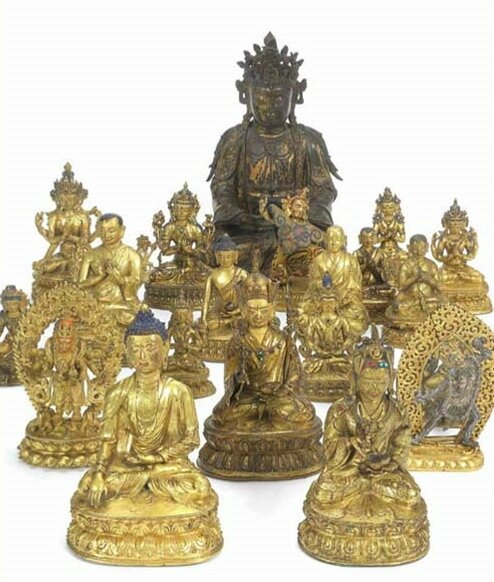

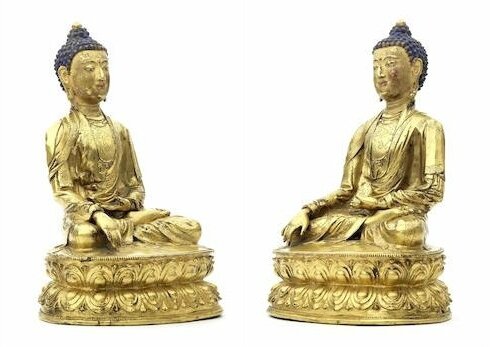

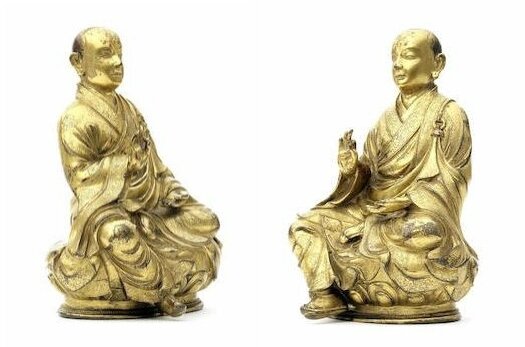


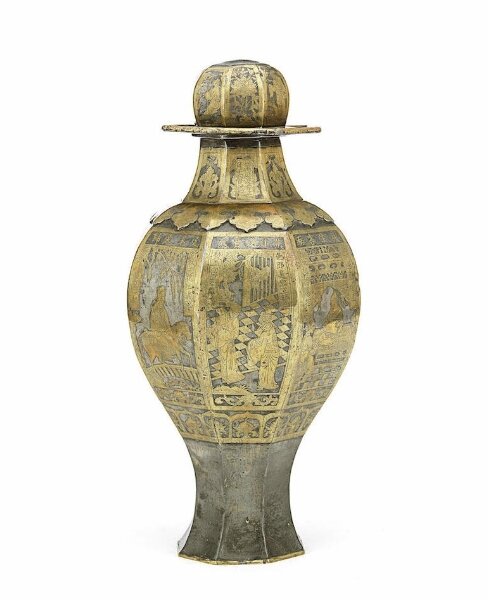
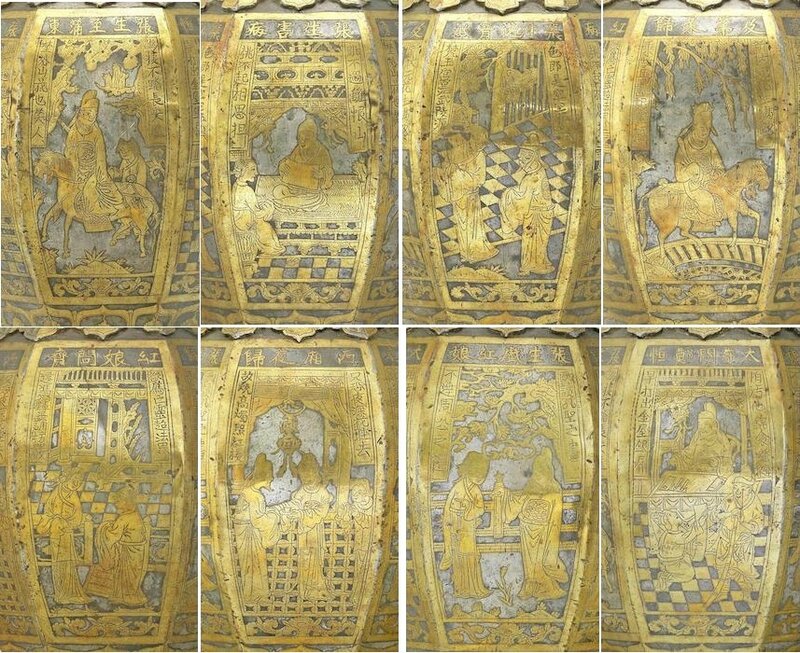





/http%3A%2F%2Fstorage.canalblog.com%2F37%2F05%2F119589%2F120373916_o.jpg)
/http%3A%2F%2Fstorage.canalblog.com%2F60%2F10%2F119589%2F113139827_o.jpg)
/http%3A%2F%2Fstorage.canalblog.com%2F48%2F83%2F119589%2F96649014_o.jpg)
/http%3A%2F%2Fstorage.canalblog.com%2F74%2F46%2F119589%2F95895471.jpg)